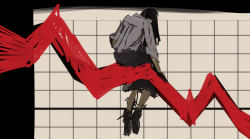The Nov. 14 issue of The Georgetown Voice published an article regarding the South Asian Society’s annual cultural show Rangila, “Rangila Expands its Focus.” Though the review’s overall positive assessment of the show is greatly appreciated, the article seems to highlight Rangila’s entertainment value while at the same time downplaying the show’s purpose as a forum of cultural exchange. In this article, the reviewers state that “seamless blend of traditional, modern and global influences on South Asian arts [in the act] the Candleless Dance” raises a question that is repeated throughout the article: “What is Rangila?”
A slightly closer and more in-depth analysis of this act and the show in general would demonstrate that the Candleless Dance, in its beautiful integration of styles, does not trigger the question “what is Rangila.” Rather, it exemplifies what Rangila is. Rangila is, and always has been, as every single flyer, poster and advertisement for the annual Georgetown phenomenon states, “an evening celebrating South Asian culture and the South Asian American experience.” The question that the Voice’s Rangila reviewers should be asking is not “What is Rangila,” but rather “What is culture?” To state that the “inclusion of techno, rock and hip-hop” influences through such acts as the Candleless Dance, Groove Theory and Third World Harlem somehow detracts from Rangila’s purpose as a forum of cultural exchange and a promoter of South Asian American culture demonstrates a very static, rigid and outdated understanding of culture. Anthropologists no longer understand culture in this manor; rather, they define culture as a phenomenon that borrows different elements and changes constantly. Anthropologist, SFS Professor and Chair of the Culture and Politics major Susan Terrio stated after watching Rangila that the show “provides the audience with the best example of a living culture one can find-hybrid, changing, inclusive and celebratory in the best sense.” Before trying to put South Asian culture in a box with the label “TRADITIONAL” on it, an all-too-common misinterpretation that is not by any means unique to the Voice, a whole-hearted attempt should be made to see what exactly defines South Asian culture. This analysis will find that South Asian culture is much more than “traditional” perceptions often associated with the Indian subcontinent-it will find a culture that is rich, growing and constantly changing. Rangila epitomizes this South Asian culture, one that blends the beauty and richness of South Asian tradition and heritage with the progressive influences of different times and environments. So once again: “What is Rangila?” It the happy blend of styles of Karnika Bhalla (SFS ‘05) and Geeta Kotak’s (CAS ‘04) Candleless Dance, it is the energy of Third World Harlem, it is the hip-hop influence of Groove Theory, it is Somil Trivendi’s (CAS ‘04) brilliant combination of South Asian and Western songs, it is the emotion and grace portrayed in Rahul Chatlani (MSB ‘04) and Arathi Subramanian’s (MSB ‘04) Sur Aur Taal dance, it is the traditional and symbolic beauty of Vidhya Iyer (CAS ‘03) and Samina Jain’s (SFS ‘03) Bharatanatyam classical dance. Rangila is simply the South Asian Society’s proud celebration of our rich, constantly changing culture.
On Saturday, Nov. 23, the Georgetown South Asian Society sent a team consisting of their most talented Rangila dancers to the annual national dance competition Raas Chaos at George Washington University. For the first time in the SAS’ nine-year history, the team placed in the competition and returned home with a second-place trophy. This feat is truly a great accomplishment for the South Asian population at Georgetown, as our team was competing with schools from all over the country, many with South Asian populations significantly larger than Georgetown’s.
Vinoda Basnayake (MSB ‘03)
South Asian Society President




